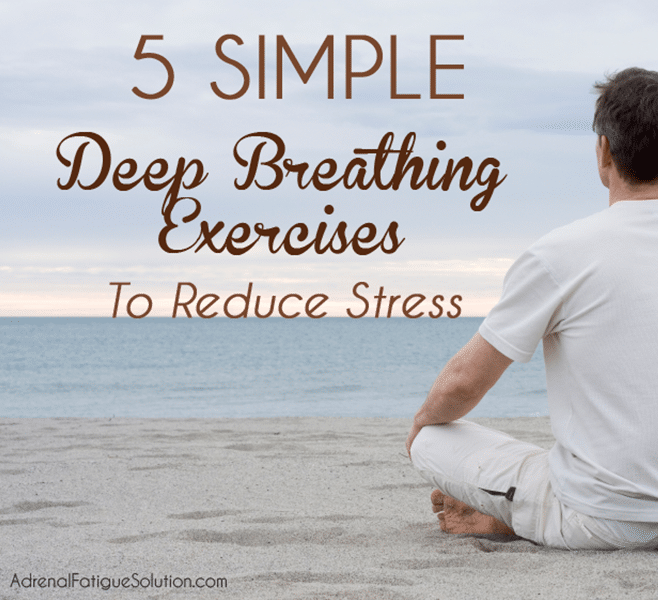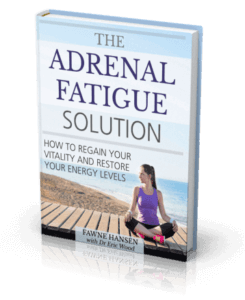Stress is detrimental to our health, and the cause of innumerous health problems. Worryingly, 47% of Americans report feeling stressed. Whether it’s work, family issues or simply having too much on our plates, stress is something we need to combat if we are to lead healthy, happy lives.
What Are the Signs of Stress?
Short-term stress and anxiety are part of being human, but when we remain on ‘high alert’ in the long-term, can manifest in physical and psychological ways like increased heartbeat, headaches, muscle aches and shortness of breath.
Poor handling of anxiety and stress can lead to adrenal fatigue, whose symptoms may include morning lethargy, memory loss, lowered immune system function and an inability to focus on daily tasks. Many adults and teenagers exhibit impulsive behavior while some people partake in addictive practices like smoking, excessive drinking and overeating (especially salty foods).
How Do Deep Breathing Exercises Combat Adrenal Fatigue?
By learning how to deep breathe properly, you will help to lower stress levels and ward off adrenal fatigue. All of these breathing methods can be practiced at home or in the office, and take only a few minutes each day. They’re also excellent techniques to incorporate into meditation.
Belly Breathing
The first technique you need to learn to do is what’s called “belly breathing”. This is the most basic of the breathing methods we have at our disposal, and therefore is the one you should master before trying out the others. It’s very simple, and requires just a few steps:
- Sit down comfortably, or lay down on a yoga mat, depending on personal preference.
- Place one hand on your stomach, just below your ribcage. Place the second hand on the center of your chest.
- Breathe in deeply through your nostrils and let your first hand be pushed out by your stomach. Your chest should remain stationary.
- Breathe out through your lips, pursing them as if you were about to whistle. Gently guide the hand on your stomach inwards, helping to press out the breath.
- Slowly repeat between 3 and 10 times.
Continue for as long as you feel necessary. After you have mastered this breathing exercise, there are four additional methods for you to try, ranging in difficulty.
The “4-7-8” Breathing Technique
The method which we call “4-7-8 breathing” also requires you to be sitting or lying down comfortably. Here are the steps you need to follow:
- Get into the belly breathing exercise position, with one hand on your stomach and one on your chest.
- Breathe in slowly but deeply. Take 4 seconds to breathe in, feeling your stomach move in the process.
- Hold your breath for 7 seconds.
- Breathe out for 8 seconds, as silently as you can manage. Once you reach a count of 8, you should have completely emptied your lungs of air.
- Repeat as many times as you need, making sure to stick to the 4-7-8 pattern.
Roll Breathing
This method is great for those looking for a relaxation breathing exercise that can be done comfortably while sitting. Its aim is not just to relax, but also to encourage the full use of your lung capacity.
Beginners are advised to lie down, but after your first time, you should find these steps just as easy to complete this exercise while sitting:
- Get into the belly breathing position, with your left hand on your stomach, and right hand over your chest.
- Take a deep, slow breath from your lower lungs, ensuring that the hand over your chest doesn’t move as you take the breath. Use your nose to breathe in, and exhale using your mouth.
- Repeat this diaphragmatic breathing up to 8 times. On the ninth repetition – once you have filled your lower lungs – take a breath that will move your chest up, as you would normally breathe. This will fill your entire lung capacity.
- Gently exhale through your mouth, being sure to completely empty your lungs. While you exhale, make a small “whooshing” noise. You should notice that both of your hands move back towards your body as both your stomach and chest fall.
- Practice this method for between 4 and 5 minutes. With each exhalation, you should be able to feel a marked difference in your stress levels.
Morning Breathing
While the above three exercises can be completed whenever necessary, the next method is called ‘Morning Breathing’ and, as the name suggests, should be practiced once you have woken up.
This breathing exercise aims to stretch relax your muscles after a good night’s sleep. The following steps will help to minimize tension for the remainder of the day:
- Stand up straight and, with your knees slightly bent, bend your torso forward from the waist. Your arms should be limply hanging next to you, toward the floor.
- Take a breath in slowly and return to your original standing position. To do so, pretend that you are ‘zipping’ yourself up from the waist to the top of your neck. Your head should be the last thing to straighten.
- Slowly exhale, and return to the bent position forward by the end of your breath. When you have finished, stand up straight and stretch your muscles as required.
Deep Muscle Relaxation with Belly Breathing
This progressive muscle relaxation technique is more involved than the others in this list, but is one of the best breathing exercises for anxiety and extreme fatigue.
This exercise requires tensing specific muscle groups for 5-10 seconds, though never to the point of pain or cramping. Release the tension and observe the feelings of relaxation that radiate. Be sure to pay the most attention to muscles causing discomfort or ache.
Be sure to conduct this stretch with belly breathing, which will help you attain the relaxation response.
To start, sit down in a comfortable position and focus on your belly breathing, closing your eyes if need be. When you have found a rhythm:
- Starting with your face, knit your eyebrows together and purse your lips. Try to pull your facial muscles toward your nose for 15-20 seconds and release.
- Your jaw holds a great deal of pressure. To relieve some of it, clench your jaw for five seconds and release, letting the stress dissipate.
- For your neck and shoulders, shrug your shoulders in the direction of your ears and hold, concentrating on the tension. Let it dissolve. Spend 15 seconds recovering before tilting your chin to your chest for another 5-10 seconds.
- Pull your forearms towards your shoulders while flexing your upper arm muscles. Hold for five seconds and release, while imagining the stress melting away.
- Move your focus to your abdomen by squeezing your stomach muscles. Hold for five seconds and relax. Repeat while paying special attention to your chest.
- To destress your legs, first tense the muscles in your thighs and buttocks. Relax and recover. Next, your lower legs can be stretched, point your toes downward and holding for five seconds.
Combined with the correct breathing technique, progressive muscle relaxation is a wonderful exercise to fully relax the body, and is fantastic to conduct before bedtime.
Restore Your Vitality
Whichever stretch you choose, be sure to be patient. Listen to your body and, when you feel anxious or stressed, practice your breathing exercise to combat adrenal fatigue. Best of all: there is no limit to how often you can practice them!




thx for good and helpful topic…
THis realy helped me relax thx so so much!!!
Too much information! Caused stress.